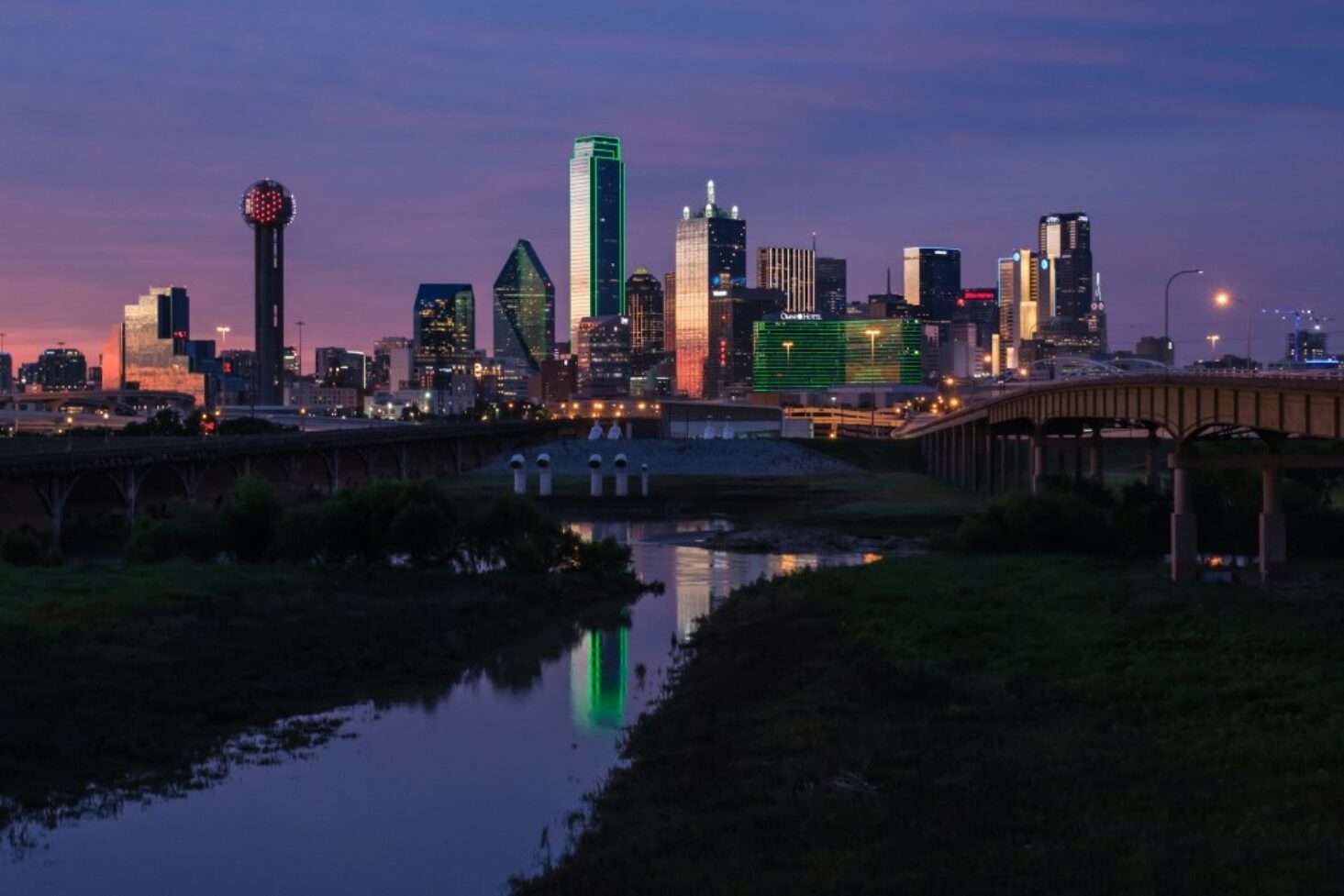
The Best Dallas Attractions for Architecture Lovers
Dallas, a vibrant city in the heart of Texas, is a treasure trove for architecture enthusiasts. With its eclectic mix of historic landmarks and modern marvels, Dallas offers a fascinating journey through architectural styles and eras. The city’s skyline is a testament to its dynamic growth and cultural evolution, drawing architecture lovers from around the world. Whether you’re captivated by sleek skyscrapers, historic buildings, or innovative designs, Dallas has something to pique your interest.
One of the most compelling aspects of exploring Dallas is its historic sites. These locations offer a glimpse into the city’s past, showcasing architectural styles that have stood the test of time. From early 20th-century buildings to mid-century modern gems, Dallas’s historic districts are a delight for those who appreciate the intricate details and stories behind each structure.
Dallas is not just about history; it’s a city that thrives after dark as well. The nightlife here is as diverse as its architecture, with many bars and clubs housed in beautifully designed buildings. The interplay of lights and shadows against the architectural backdrop creates a unique ambiance that architecture lovers can appreciate while enjoying a night out.
For those who have a passion for history, Dallas is a haven of attractions tailored for history buffs. The city is home to several landmarks that narrate the rich tapestry of its historical evolution. Each building and monument has a story to tell, reflecting the cultural and social changes that have shaped Dallas over the decades.
Nature and architecture often go hand in hand in Dallas. The city boasts a variety of attractions for nature lovers that integrate natural beauty with stunning architectural designs. Parks and gardens are frequently home to pavilions, conservatories, and sculptures that enhance the natural landscape, offering a serene escape within the urban environment.
Planning a day out in Dallas can be an architectural adventure in itself. The city offers numerous attractions perfect for a day out, where you can immerse yourself in its architectural splendor. From walking tours to guided visits, there are plenty of ways to discover the architectural gems scattered throughout the city.
Art and architecture often intersect, and Dallas is a prime example of this fusion. The city is rich in attractions for art lovers, where architectural spaces serve as canvases for artistic expression. Museums and galleries in Dallas are not just repositories of art but are also celebrated for their own architectural significance, creating a dual experience for visitors.
Sports fans can also find architectural wonders in Dallas. The city’s attractions for sports enthusiasts include stadiums and arenas that are feats of modern engineering and design. These structures are not only venues for thrilling sports events but also landmarks that contribute to the city’s architectural landscape.
Museums in Dallas offer another dimension to the city’s architectural allure. The museums here are housed in buildings that range from historic to contemporary, each with its unique architectural charm. Visiting these museums provides an opportunity to appreciate the design and structure of the buildings themselves, along with the exhibits they host.
Dallas is a city that offers a rich tapestry of architectural wonders for enthusiasts to explore. Its blend of historic and contemporary architecture, coupled with its cultural and natural attractions, makes it a fascinating destination. Whether you’re wandering through historic districts, enjoying the nightlife, or exploring museums, the architectural beauty of Dallas is bound to leave a lasting impression. This vibrant city not only showcases the evolution of architectural styles but also celebrates the creativity and innovation that continue to shape its skyline. So, pack your bags and get ready to discover the architectural delights that await you in Dallas.
The Perot Museum of Nature and Science
The Perot Museum of Nature and Science, designed by Pritzker Prize-winning architect Thom Mayne, is a striking example of contemporary architecture. Opened in 2012, the museum’s design reflects its purpose as a place of learning and discovery. The building features a dynamic and futuristic facade, with a glass-encased escalator that offers stunning views of the city.
The museum’s innovative design includes sustainable elements, such as a rainwater collection system and a green roof, making it an example of eco-friendly architecture. Inside, the building’s open spaces and interactive exhibits provide a modern and engaging experience for visitors.
Architecture enthusiasts will appreciate the museum’s blend of form and function, as well as its commitment to sustainability. The Perot Museum stands as a testament to the possibilities of modern architectural design and its role in enhancing educational experiences.
The Dallas Arts District
The Dallas Arts District is one of the largest arts districts in the United States and a haven for architecture lovers. The district is home to a variety of buildings designed by some of the world’s most renowned architects. Highlights include the Margot and Bill Winspear Opera House, designed by Foster + Partners, and the Meyerson Symphony Center, designed by I.M. Pei.
The Winspear Opera House features a distinctive horseshoe-shaped design that enhances acoustics and provides an intimate setting for performances. The Meyerson Symphony Center, with its elegant and minimalist design, is considered one of the finest concert halls in the world.
Walking through the Dallas Arts District, visitors can also admire the modern architecture of the AT&T Performing Arts Center and the Renzo Piano-designed Nasher Sculpture Center. The district’s mix of contemporary and classic architectural styles makes it a must-visit destination for anyone interested in design and the arts.
Reunion Tower
Reunion Tower is one of Dallas’s most recognizable landmarks and a prime example of futuristic architecture. Designed by architect Welton Becket, the tower was completed in 1978 and features a distinctive geodesic sphere at its top. This sphere, illuminated by 259 LED lights, provides a stunning light show that can be seen from miles away.
The tower’s observation deck, known as the GeO-Deck, offers panoramic views of the Dallas skyline and beyond. Visitors can enjoy interactive displays that provide information about the city’s history and landmarks, making it a perfect spot for both sightseeing and learning about Dallas’s architectural evolution.
Reunion Tower’s design is both functional and visually striking, representing the innovative spirit of Dallas. Its iconic silhouette has become a symbol of the city’s architectural prowess and forward-thinking design.
The Dallas Museum of Art
The Dallas Museum of Art (DMA) is not only a repository of fine art but also an architectural gem. Designed by architect Edward Larrabee Barnes, the museum opened in its current location in 1984. The building’s design is characterized by clean lines, geometric shapes, and the use of natural light, creating an inviting and contemplative space for art lovers.
The DMA’s exterior features a minimalist aesthetic with a facade of Texas limestone, reflecting the region’s natural beauty. Inside, the museum’s spacious galleries and courtyards provide a serene environment for viewing the extensive collection of art from around the world.
Architecture enthusiasts will appreciate the careful attention to detail in the museum’s design, from the harmonious blend of indoor and outdoor spaces to the thoughtful layout that enhances the art viewing experience. The DMA is a prime example of how architecture can elevate the cultural experience.
Klyde Warren Park
Klyde Warren Park is a modern urban park that exemplifies innovative architectural and landscape design. Completed in 2012, the park was designed by landscape architecture firm The Office of James Burnett and spans 5.2 acres over the Woodall Rodgers Freeway. The park seamlessly connects downtown Dallas with the uptown neighborhood, creating a green oasis in the heart of the city.
The park’s design includes open lawns, a performance pavilion, botanical gardens, and a children’s park, all integrated into the urban landscape. The use of sustainable materials and eco-friendly practices, such as solar-powered lighting and native plantings, highlights the park’s commitment to environmental stewardship.
For architecture lovers, Klyde Warren Park offers a unique perspective on urban design and the transformative power of public spaces. The park’s ability to bring people together and enhance the city’s livability through thoughtful design makes it a standout attraction.
The Old Red Museum
The Old Red Museum, housed in the historic Dallas County Courthouse, is a stunning example of Romanesque Revival architecture. Built in 1892 and designed by architect Max A. Orlopp Jr., the building is characterized by its distinctive red sandstone facade, clock tower, and ornate detailing.
The museum’s architecture reflects the grandeur and craftsmanship of the late 19th century, with intricate carvings, arched windows, and a dramatic entrance. Inside, the building has been meticulously restored to preserve its historical features while housing exhibits that showcase the history of Dallas and the surrounding region.
Architecture enthusiasts will appreciate the Old Red Museum’s blend of historic preservation and modern functionality. The building serves as a testament to Dallas’s rich architectural heritage and the city’s commitment to preserving its past.
Thanks-Giving Square
Thanks-Giving Square is a unique architectural and spiritual landmark in downtown Dallas. Designed by architect Philip Johnson, the square was dedicated in 1976 as a place for reflection and gratitude. The site’s centerpiece is the Chapel of Thanksgiving, a spiraling structure that symbolizes the upward reach of the human spirit.
The chapel’s exterior features a helical shape clad in white marble, creating a striking visual contrast against the urban backdrop. Inside, visitors can marvel at the “Glory Window,” one of the largest horizontally-mounted stained-glass windows in the world, which fills the space with vibrant colors and light.
In addition to the chapel, Thanks-Giving Square includes landscaped gardens, fountains, and a Wall of Praise featuring messages of gratitude from around the world. The square’s thoughtful design and serene atmosphere make it a haven for contemplation amidst the bustling city.
Highland Park Village
Highland Park Village, opened in 1931, is one of Dallas’s premier shopping destinations and a masterpiece of Mediterranean Spanish Revival architecture. Designed by architects Marion Fooshee and James Cheek, the village features stucco facades, red tile roofs, and wrought-iron detailing, creating an elegant and timeless ambiance.
The village’s design was inspired by European marketplaces and incorporates elements such as courtyards, archways, and decorative tiles. This attention to detail and craftsmanship has earned Highland Park Village a spot on the National Register of Historic Places.
For architecture lovers, Highland Park Village offers a delightful blend of shopping and architectural exploration. The village’s preservation of its original design and its continued role as a vibrant community hub demonstrate the enduring appeal of thoughtful architectural planning.
The Bishop Arts District
he Bishop Arts District is a vibrant neighborhood in Dallas known for its eclectic mix of historic and contemporary architecture. The district features a variety of building styles, from early 20th-century storefronts to modern renovations, creating a dynamic and visually interesting streetscape.
Key architectural highlights include the Texas Theatre, a historic movie palace built in 1931, and numerous restored buildings that now house boutiques, galleries, and restaurants. The district’s pedestrian-friendly layout and colorful murals add to its charm and appeal.
Architecture enthusiasts will enjoy exploring the Bishop Arts District’s blend of old and new, as well as its emphasis on community-oriented design. The district’s commitment to preserving its architectural heritage while fostering creative expression makes it a unique destination in Dallas.
The Statler Hotel
The Statler Hotel, originally opened in 1956, is a prime example of mid-century modern architecture. Designed by architect William B. Tabler, the hotel was one of the first in the world to feature a glass-and-steel facade, setting a new standard for hotel design.
The Statler’s recent renovation has preserved its iconic mid-century elements while incorporating modern amenities and sustainable practices. The hotel’s design includes stylish interiors, rooftop gardens, and a mix of historic and contemporary decor.
For architecture lovers, the Statler Hotel offers a glimpse into the past and the future of architectural design. Its successful blend of preservation and innovation serves as a model for adaptive reuse and the enduring appeal of mid-century modern aesthetics.





